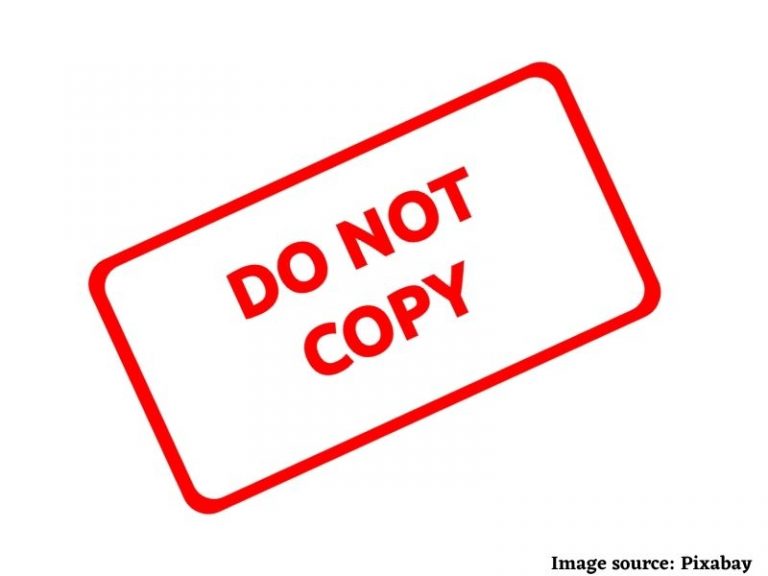Plagiarism mistakes & how to avoid them

What is considered Plagiarism?
 The following can be labelled as plagiarism
The following can be labelled as plagiarism
- Buying content (that lacks intellectual rights)
- Stealing content
- Borrowing a paper from someone
- Copying text snippets from the internet without using quotation marks or proper citation.
 When do we give credit?
When do we give credit?
- Making sure to give credit where it is due is key to avoiding plagiarism.
Here’s what needs to be credited or documented:
 Words or ideas presented in a magazine, book, newspaper, song, tv program, movie, web page, computer program, letter, advertisement, or any other medium.
Words or ideas presented in a magazine, book, newspaper, song, tv program, movie, web page, computer program, letter, advertisement, or any other medium.- When you copy the exact words or a unique phrase.
- When you reprint any diagrams, illustrations, charts, pictures, or other visual materials.
- Information you gain through interviewing or conversing with another person, face to face, over the phone, or in writing.
- When you reuse or report any electronically-available media, including images, audio, video, or other media.
 Actions that are in a grey area
Actions that are in a grey area
- Using the words of a source too closely when paraphrasing (where quotation marks should have been used).
- Building on someone’s ideas without citing their spoken or written work.
- Hiring someone to write for you – Common for books, not tolerated by schools and universities, and unethical if not disclosed.
How to avoid Plagiarism
Practical tips that will help you to not only avoid plagiarism, but also improve the efficiency of your research and writing.
 Reading and note-taking
Reading and note-taking
- In your notes, always mark someone else’s words with a biq Q, for quote. Use quotation marks (“…”, A.A. said) if it’s a direct quote.
- Indicate in your notes which ideas are taken from sources with a big S, and which are your own insights (ME)
- When information comes from sources, record relevant documentation in your notes (author, title, date of publication; page number if relevant, and the URL for web-based sources).
 Writing paraphrases/summaries
Writing paraphrases/summaries
- Use a statement that credits the source somewhere in the paraphrases or summary.
Example: According to Anna Adams, … - Check your paraphrase or summary against the original text and correct any errors; keep quotes original and accurate.
- Put quotation marks around any unique words or phrases that you cannot or do not want to change.
Example:
According to Anna Adams, “extreme inequalities” exist in our educational system.
 Writing direct quotations
Writing direct quotations
- Mark the quote with quotation marks, or set it off from your text in its own block.
- Keep the source author’s name in the same sentence as the quote.
- Use ellipsis points with spaces (… ) to indicate omitted text.
Example:
“Driving is not as automatic as one might think; in fact, it imposes a heavy procedural workload on cognition that … leaves little processing capacity available for other tasks” (Salvucci and Taatgen).
- Use brackets ( [] ) when adding words.
OK: Adams claims there are “severe (social) inequalities” in our (the U.S.) educational system.
Be careful not to edit or make any additions that skew the original meaning of the quote:
OK: Adams claims there are “severe inequalities” in our educational system, which I think is exaggerated.
WRONG: Adams claims there are “(some, but not that) severe inequalities” in our educational system. - Use quotes that will have the most rhetorical, argumentative impact in your paper.
- Quote no more material than is necessary to avoid weakening your credibility.
 Writing about other’s ideas
Writing about other’s ideas
- Always note the name of the idea’s originator in the sentence or throughout the paragraph.
- Use parenthetical citations,
footnotes, or endnotes to refer readers to additional sources about the idea, as necessary. - Be sure to use quotation marks
around key phrases or words that the idea’s originator used to describe the idea.
 Practices to keep your own intellectual property safe
Practices to keep your own intellectual property safe
- Do not save your paper in the same file over and over again.
- Maintain copies of your drafts in numerous media, and different secure locations.
- Password-protect your computer.
- Password-protect your files.
 Revising, proofreading, and finalising your paper
Revising, proofreading, and finalising your paper
- Proofread and cross-check with your notes and sources to make sure that anything coming from an outside source is acknowledged.
- To check your text for plagiarism online, try the “Deep Check” on www.grammarcheck.net/editor
Source: www.grammarcheck.net
Also read: Russia: Plagiarist politicians pandemic
















Add comment